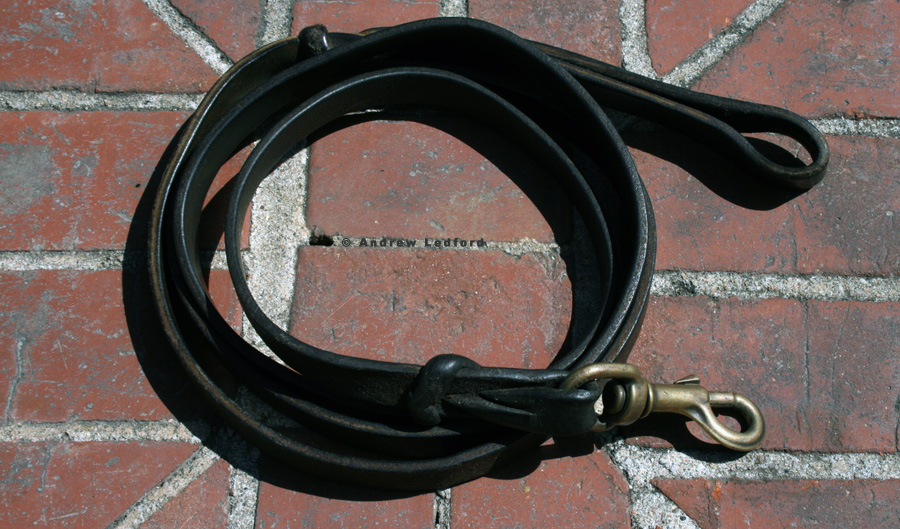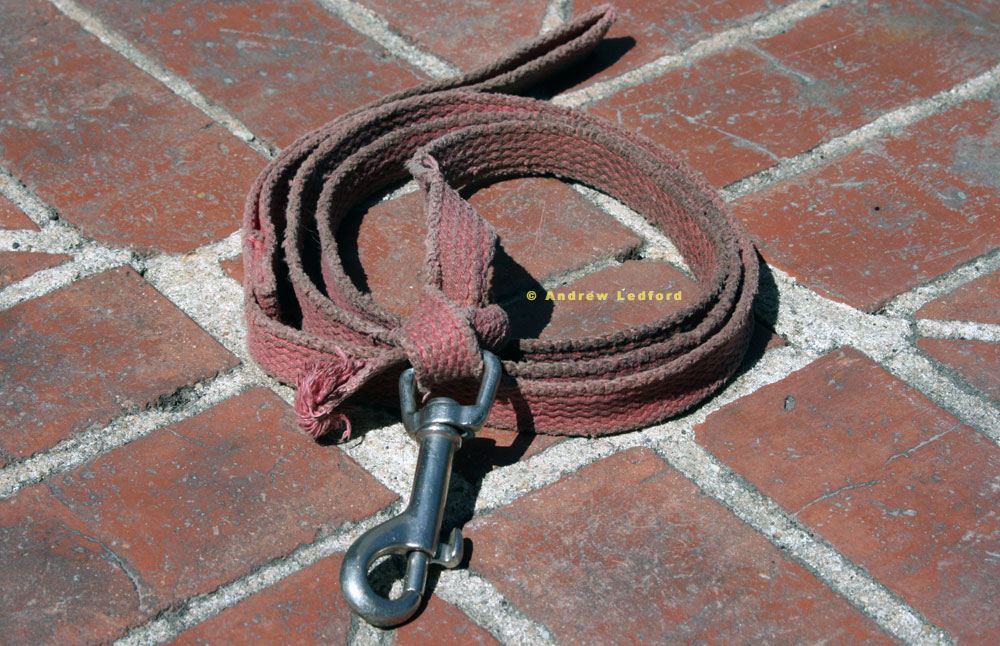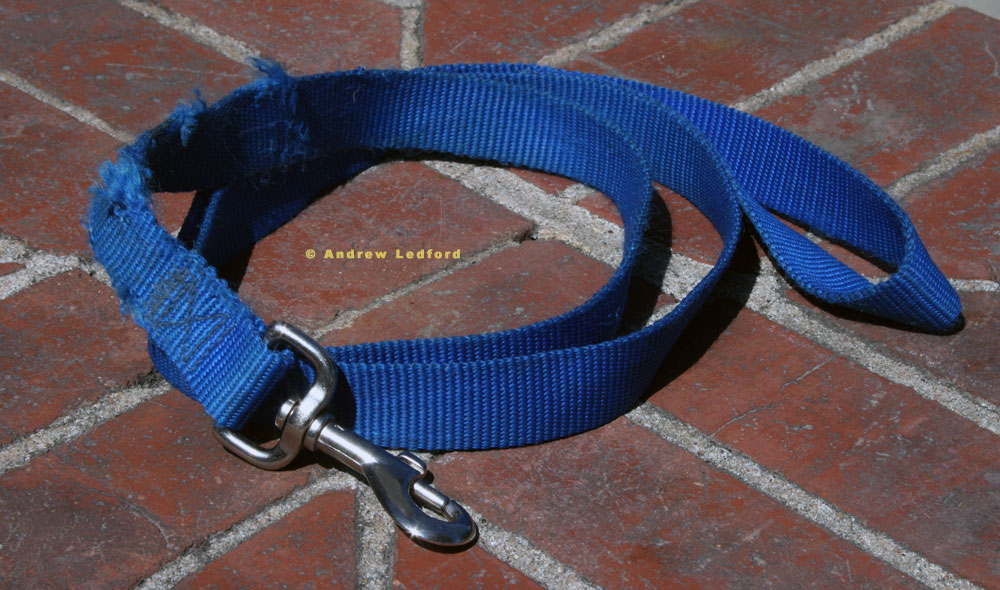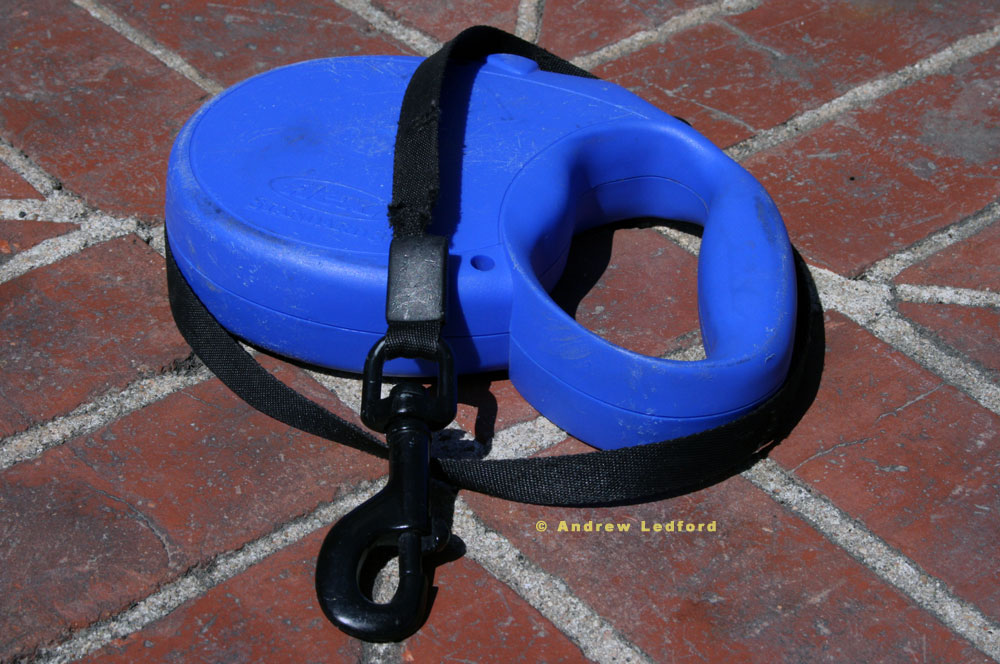The Dog Training Leash – Should You Use Leather or Nylon
The Dog Training Leash By Andrew Ledford 714-827-4058
Dog training leashes come in a variety of sizes and materials.
Learn what kind of training leash is best for you and your dog.
A dog training leash is designed first and foremost for training your dog, as opposed to a lead that’s used to hold the dog back. While any leash can be used for dog training, you’ll find training is most efficient if you use the proper equipment.
I expect most people searching for information about training leashes are looking for one designed for obedience training.
How long should a dog training leash be?
The type of dog training you’re doing can affect the length of leash use. Some styles of training may require a shorter or longer leash. In these articles I will primarily talk about what I use in my training practice. (You can read about my style of dog training here. This article is coming soon.)
The standard obedience training leash is six feet long and one half to five eighths inches wide. There are exceptions to this. The exceptions usually involve the length of the leash. Dog training leashes for shorter people, children, and very tall people should match the individual’s height. In general the leash should be as long or slightly longer that the person is tall.
It’s also desirable that the leash fits comfortable in the handler’s hands. This means that the handler can comfortably hold four folds of the leash without undue effort.
What material is best for a dog training leash?
The material a leash is made of is important.
The leather training leash
I recommend either using a leather leash or a cotton leash for training. Leather leashes are traditional and can be either chrome or oil tanned. I personally like the oil tanned leashes. Although I still have an old Vietnam era chrome tanned leather leash and I used these for many, many years. A new leather leash is often quite stiff and requires a breaking in period. However, once the leather has been used for a while this type of leash is very comfortable to handle. For ease of handling and overall performance leather is the best dog training leash you can get.
Leather is my perfected material for a leash and collar dog obedience training program.

Cotton training leash
While the leather leash is probably the best for dog training the cotton leash has some advantages too. A big advantage to many animal loving people is, cotton leashes are not made from an animal. This makes it ideal for those who are vegetarians. I now use a cotton leash much more often as my primary dog training leash. I started this practice when I was in a stage of my life where I was vegetarian.

Another advantage to a cotton training leash is that they are inexpensive. This makes the cotton leash a handy backup leash. I usually have one in my pocket just in case it’s needed for an emergency. If your dog chews a $10 cotton least it’s no big deal. But if they chew a $100 leather leash, well that’s another story. Cotton leashes are cheap enough so you can buy several. Keep your extra leashes in a handy location for emergencies. I usually have one in the car and one by each door in the house.
Nylon leashes

I don’t think nylon leashes are very good for formal dog obedience training. But they do have their uses. The main drawback to a nylon leash is the nature of the material itself. Nylon is a slippery material to handle. This means it is hard to handle properly while trying to learn new training techniques. When you add managing an unruly dog to the equation they are even more troublesome. Nylon leashes are very hard on the flesh and skin of most people’s hands. It’s easy to get rope burn abrasions when using a nylon leash.
On the positive side, nylon leashes make good emergency slip leads. They can also be useful as a dragline for the dog to wear around the house. Make sure to only allow the dog to wear a leash when you’re supervising your pet. The danger of a dragline is that the leash may get caught on something and choke the dog to death. It can be helpful to cut the handle off the leash if you are using it as a dragline.

Retractable Leashes.
Retractable leashes do have their place in dog training. However, in general they should not be used by novice handlers. The main disadvantage to retractable leashes is they tend to teach dogs to pull. Retractable leashes can sometimes replace a long-line for distance work and beginning off leash training. This is especially true for people with limited mobility. In these situations the retractable leash can have added advantages for increasing the safety of the handler.
Training Leash Snaps
The last point I want to make is about the device that fastens the training leash to the training collar or harness. This is an important part of a dog training leash that’s often overlooked. The all-important snap can also be of assistance for teaching some training exercises. The best snaps are made from brass or marine grade hardware. If you are getting a leather leash make sure it has a high quality snap. If you’re getting a cotton or nylon leash get one from a reputable manufacturer and the snap should be adequate. It’s not uncommon for a really cheap and poorly made snap to break with a lunging dog.
For my own training leash I prefer a traditional bolt snap. However for some dog handlers I recommend getting a well-made clasp that is difficult to operate accidentally. When people are fumbling around the snap it’s easy to accidentally let a dog off the leash.
Where a leash will break.
The weak points of a leash are the areas where two points meet. This includes the stitching or braiding of the handle and snap as well as the snap itself. I have worked with many leashes that break at the snap.
I hope this help answers some of your questions about dog training leashes.
Your dog trainer Andrew Ledford
714-827-4058
You can read more here about dog obedience and leash training
How to put on, fit, and size a dog training choke collar
Head collar training
